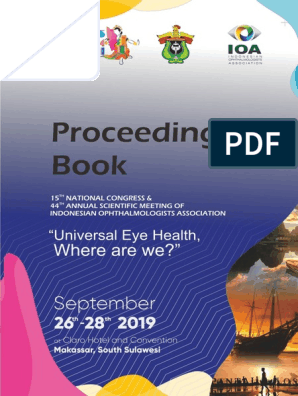CLASSIFICATIO INDICATION MECHANISM CONTRAINDICATION SIDE EFFECTS NURSING MANAGEMENT
N OF DRUG OF ACTION
Generic Name: Chemical: used to treat Binds to Administration of live- vision changes, Use dexamethasone cautiously in
Synthetic conditions intracellular virus vaccine to patient or swelling, patients with congestive heart
Dexamethasone adrenocortical such glucocorticoid family member, failure, hypertension, or renal
rapid weight gain,
as arthritis, receptors and insufficiency because drug can
steroid hypersensitivity to sleep problems
blood/hormon suppresses cause sodium retention, which may
Brand Names: e disorders, inflammatory dexamethasone or its (insomnia), lead to edema and hypokalemia.
allergic and immune components (including mood changes, •Also use cautiously in patients
Decadron reactions, responses by: sulfites), idiopathic acne, who have had intestinal sugery and
skin diseases, •inhibiting thrombocy- topenic dry skin, in those with peptic ulcer,
Therapeutic Class: eye problems, neutrophil and purpura (I.M. diverticulitis, or ulcerative colitis
Dose: thinning skin,
breathing monocyte accu- administration), systemic because of the risk of perforation.
problems, mulation at bruising or •Give once-daily dose of
10mg Anti-inflammatory, fungal infections
bowel inflammation discoloration, dexamethasone in the morning to
diagnostic aid, disorders, site and sup- coincide with the body’s natural
slow wound
Frequency immunosuppressant cancer, and pressing cortisol secretion.
healing,
immune phagocytic and •Give oral drug with food to
Pregnancy increased
system bactericidal decrease GI distress.
:TID Category: C. disorders. It is sweating,
action Be aware that dosage forms with a
also used as •stabilizing headache,
concen- tration of 24 mg/ml are for
a test for an lysosomal dizziness, I.V. use only. •Shake I.M. solution
adrenal gland membranes spinning before injecting deep into large
Route: disorder •suppressing muscle mass.
sensation,
(Cushing's antigen Assess patient for evidence of
syndrome). nausea,
response of osteo-porosis, Cushing’s syndrome,
P.O macrophages stomach pain,
and other systemic effects during
and helper T bloating, long-term use.
cells •inhibiting muscle weakness, •Monitor neonate for signs of
synthesis of or hypoadreno- corticism if mother
Half Life: inflammatory
changes in the received dexamethasone during
response pregnancy. Be aware that some
shape or location
3–4.5 hrs. mediators, such preparations contain benzyl alcohol,
of body fat
as cytokines, which may cause a fatal toxic
interleukins, (especially in your syndrome in neonates and immature
and arms, legs, face, infants.
neck, breasts, •Watch for hypersensitivity
prostaglandins.
and waist). reactions after giving acetate or
sodium phosphate form; both may
ADVERSE EFFECTS: contain bisulfites or parabens, to
CNS: Depression, emotional which some people are allergic.
lability, euphoria, fever,
headache, increased ICP with
�papilledema, insomnia, light-
headedness, malaise, neuritis,
neuropathy, paresthesia,
psychosis, seizures, syncope,
tiredness, vertigo, weakness
CV: Arrhythmias,
bradycardia, edema, fat
embolism, heart failure,
hypercholesterol- emia,
hyperlipidemia, hypertension,
myocardial rupture,
tachycardia, thrombo-
embolism, thrombophlebitis,
vasculitis EENT: Cataracts,
glaucoma, vision changes (all
forms); epistaxis, loss of
smell and taste, nasal burning
and dryness, oral candidiasis,
perforated nasal septum,
pharyngitis, rebound
nasal congestion,
rhinorrhea, sneezing
(nasal aerosol)
ENDO: Cushingoid
symptoms, decreased
iodine uptake, growth
suppression in children,
hyperglycemia,
menstrual irregularities,
secondary adrenocortical
and pituitary
unresponsiveness
GI: Abdominal distention,
bloody stools, elevated
liver function test results,
heart- burn,
hepatomegaly, increased
appetite, indigestion,
intestinal perforation,
�melena, nausea,
pancreatitis, peptic ulcer
with possible perforation,
ulcerative esophagitis,
vomiting
GU: Glycosuria, increased
or decreased number
and motility of
spermatozoa, perineal
irritation, urinary
frequency HEME:
Leukocytosis, leukopenia
MS: Aseptic necrosis of
femoral and humeral
heads; muscle atrophy,
spasms, or weakness;
myalgia; osteoporosis;
pathologic fracture of
long bones; tendon
rupture (intra-articular
injection); vertebral
compression fracture
RESP: Bronchospasm
SKIN: Acne, allergic
dermatitis, diaphore- sis,
ecchymosis, erythema,
hirsutism, necrotizing
vasculitis, petechiae,
subcutane- ous fat
atrophy, striae, thin and
fragile skin, urticaria
Other: Aggravated or
masked signs of
infection, anaphylaxis,
angioedema,
hypernatremia,
hypocalcemia,
hypokalemia,
�hypokalemic alkalosis,
impaired wound healing,
metabolic acidosis,
sodium and fluid
retention, suppressed
skin test reaction, weight
gain


















































































































